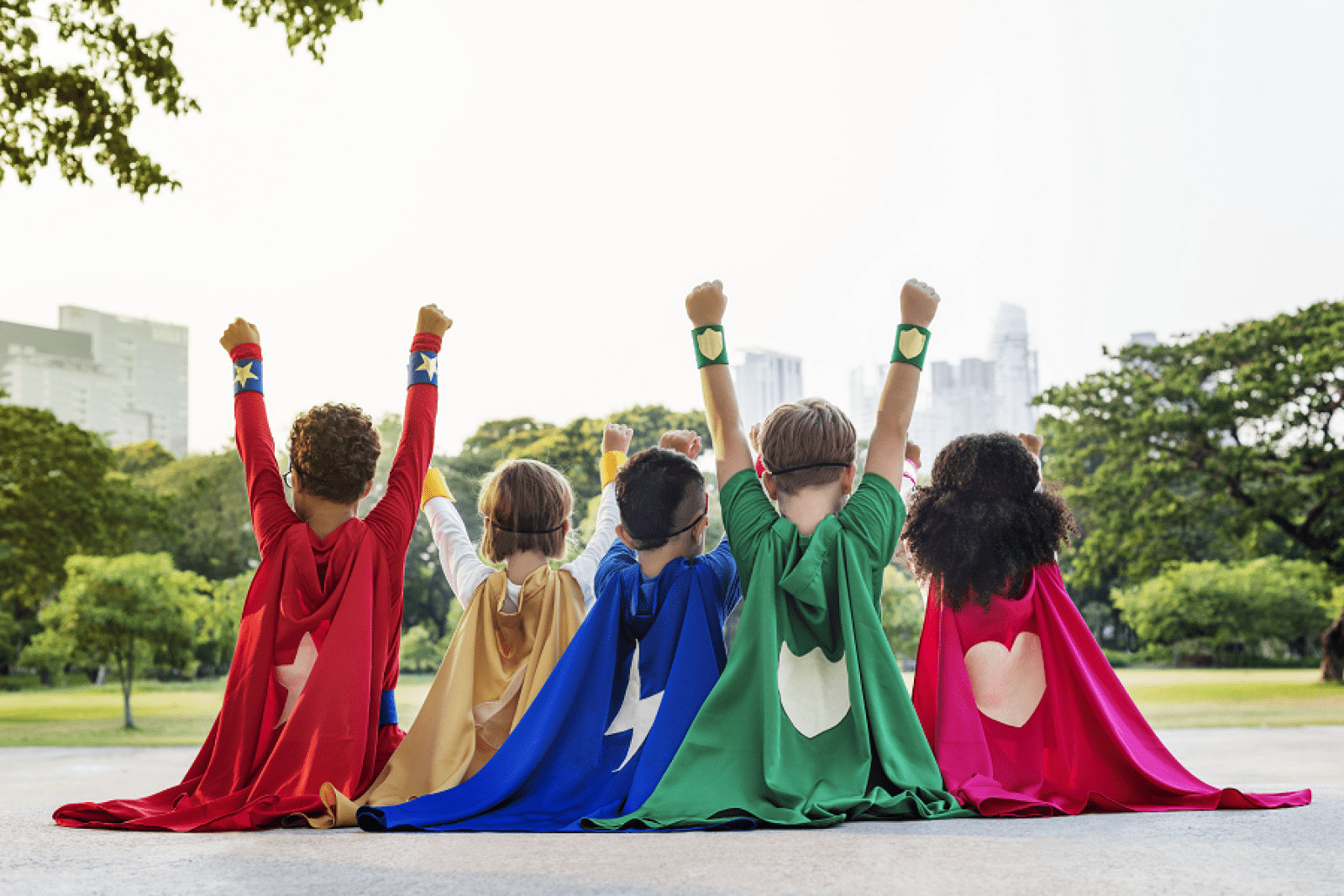What could a superhero do?
Explore a problem by imagining how a superhero’s special powers could be used to find a solution.

Overview
In this activity, students learn a thinking strategy to help them see a problem in a different way and find new solutions. Students imagine how a superhero’s special power could be applied to a problem and generate new ways to solve it. While this activity uses examples related to water conservation, other examples could be used to help nurture the curricular competency of applying and innovating.
Instructions
What you'll need
- “Apply a superhero’s power” worksheet
- “Assessing my ability to develop new ideas” rubric
- Begin the lesson by asking students who their favourite superheroes are. Explain to students that in this activity they will explore a problem by imagining how a superhero’s special powers might be used to find a solution. This thinking strategy allows them to see a problem in an unusual way and can help them think of very different ways to solve the problem.
- Present the following problem to your students: you would like them to learn more about water conservation by looking at what actions the school could take to reduce its water use.
- Select one of the superheroes to model the thinking strategy with your students. Ask students to describe the superhero’s special powers or abilities and create a list on chart paper or the board.
- Ask students to now imagine how that superhero could help address the problem. For example, if a superhero has super strength, how could that be used? Pick one special power or ability and invite students to brainstorm how it could be used to help reduce water use in the school. Write the suggested ideas on the chart paper or board. Encourage students to think of as many different ideas as they can; inform them that it’s ok to think of ideas that may be out of the ordinary but are still relevant to the problem.
- Next, ask your students to now think of ways these superhero ideas could be turned into something that could actually be done at their school. Record these ideas on chart paper or the board.
- Review these ideas with the class and help them choose one idea that seems most promising:
- Addresses the problem
- Includes a combinations of new and existing ideas
- Is reasonable and possible
- Organize students into groups and provide each student with a copy of the “Apply a superhero’s powers” worksheet. Assign each group a superhero. Instruct students that they will now use the thinking strategy to come up with new ideas to address the problem. Groups should:
- List their superhero’s powers
- Imagine how their superhero could use these powers to address the problem (What could the superhero do?)
- Think of how these superhero ideas could be turned into something they could do (What could we do?)
- Review these ideas and select the most promising one
- Invite groups to share their most promising ideas with the class.
- Conclude the activity by asking your students to suggest other situations where imaging solutions to a problem using the superhero strategy might be helpful.
Modify or extend this activity
Modification
- In Step 2, replace the problem with a local issue or have the students select one.
Extension
- In Step 7, students could create their own superhero with special powers to use for their group activity.
- Suggest to the groups to consider the powers of another superhero and develop a new set of ideas to combine with their first set.
Curriculum Fit
Grades 2, 3 Science
Curricular competencies
Evaluating
- Consider some environmental consequences of their actions (Grade 2)
- Identify some simple environmental implications of their and others’ actions (Grade 3)
Applying and innovating
- Take part in caring for self, family, classroom and school through personal approaches (Grade 2)
- Contribute to care for self, others, school, and neighbourhood through personal or collaborative approaches (Grade 3)
- Transfer and apply learning to new situations (Grade 2, 3)
- Generate and introduce new or refined ideas when problem solving (Grade 2, 3)
Big idea
- Water is essential to all living things, and it cycles through the environment (Grade 2)
Content
- Water conservation (Grade 2)
Assessments
Throughout the activity consider how well students:
- Think collaboratively during class and group discussions.
- Generate new, fresh, and relevant ideas.
- Use the criteria for a promising idea.
Guide students in using the “Assessing my ability to develop new ideas” rubric during the activity.
Teaching Notes
Books about water for kids
- A Drop in the Ocean: The Story of Water (Science Works) by Jacqui Bailey
- A Drop Around the World by Barbara McKinney
- Enough Water?: A Guide to What We Have and How We Use It by Steve Conrad
- Explore Water!: 25 Great Projects, Activities, Experiments (Explore Your World) by Anita Yasuda
- The Water Princess by Susan Verde
- Water Is Water: A Book About the Water Cycle by Miranda Paul
- Water Wow! (A Visual Exploration) by Paula Ayer and Antonia Banyard
- What On Earth?: Water: Explore, create and investigate by Isabel Thomas






